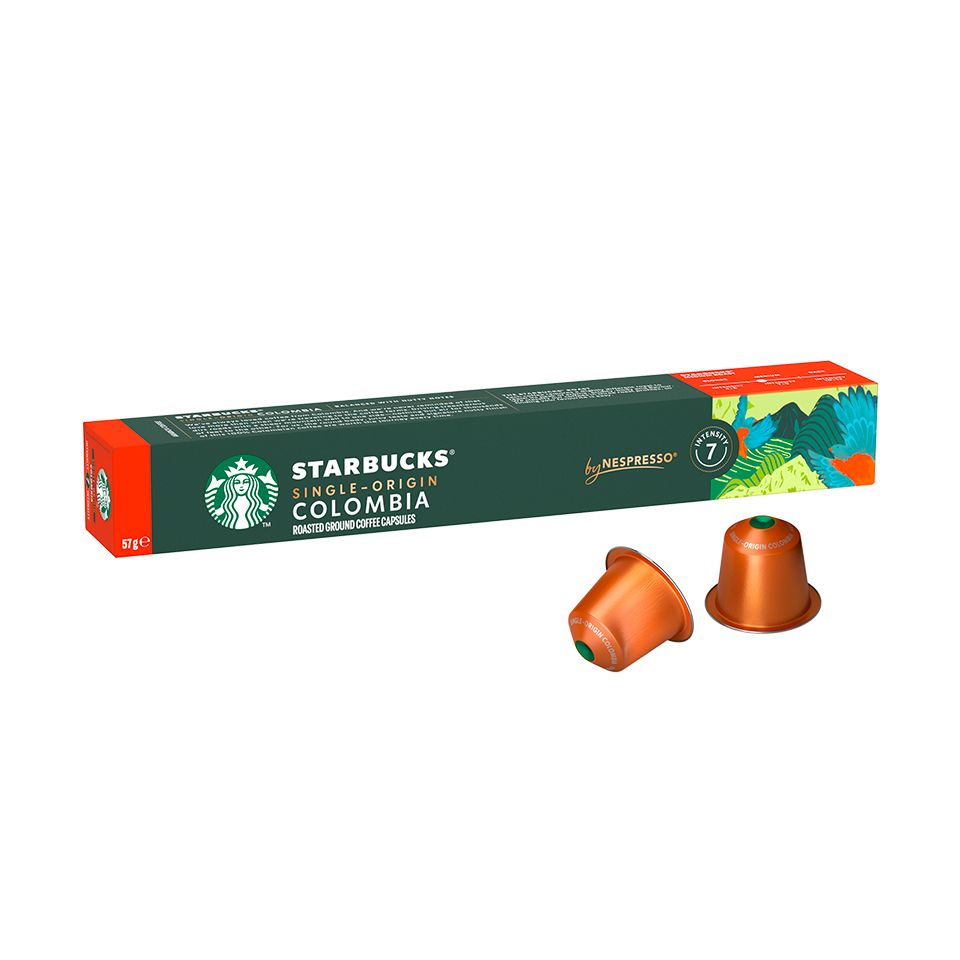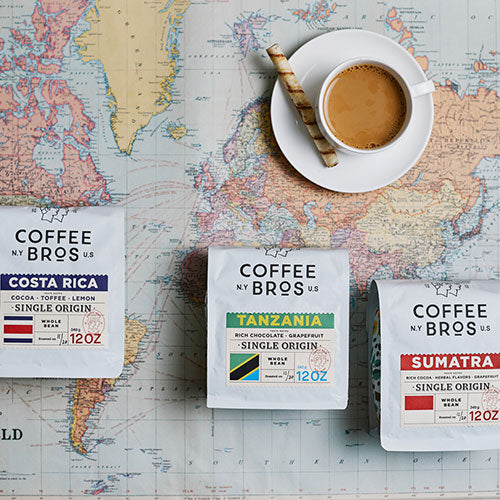Coffee Beans 101: Everything You Need to Understand About Coffee and Blended Coffee Beans
When it comes to coffee, understanding the subtleties of coffee and combined beans can change your everyday mug. From the expanding procedure to toasting methods, every action plays a duty in your coffee experience.
Recognizing Coffee Beans: Kinds and Ranges
When diving right into the world of coffee, understanding the types and ranges of coffee beans is crucial for every lover. You'll mostly come across two major varieties: Arabica and Robusta. Arabica beans are recognized for their smooth, complex flavors and lower high levels of caffeine content, making them a favored among coffee fanatics. On the various other hand, Robusta beans pack a punch with a more powerful, more bitter taste and greater high levels of caffeine levels, typically utilized in espresso blends.
Within these types, you'll discover various local varieties, each bringing unique characteristics. Ethiopian Yirgacheffe uses brilliant floral notes, while Colombian beans provide a healthy taste account. As you check out, remember to focus on processing approaches like washed or natural, as they can greatly influence the last taste. By acquainting yourself with these beans and their tastes, you'll raise your coffee experience and make more enlightened options in your brewing journey.
The Growing Process: From Seed to Bean
When you check out the journey of coffee, everything begins with seed selection techniques that set the structure for high quality. From there, cultivation and gathering play important duties in making sure the beans flourish. Lastly, handling methods change those harvested cherries right into the coffee beans you love.
Seed Option Techniques
Picking the best seeds is essential for producing high-quality coffee beans, as it lays the structure for the whole growing procedure. You should start by selecting seeds from trusted resources that prioritize high quality and hereditary diversity. Search for selections known to grow in your particular climate and dirt conditions. Focus on the seed's age and storage conditions, as fresh seeds often tend to germinate better. When possible, choose organic seeds to lessen direct exposure to hazardous chemicals. Take into consideration the disease resistance of different varieties, as this can considerably impact your yield. Do not be reluctant to consult with neighborhood farmers or specialists to gain understandings right into the ideal seed alternatives for your region. This expertise will improve your coffee-growing experience.
Farming and Harvesting
As you nurture your coffee seeds right into thriving plants, understanding the cultivation and harvesting process is vital for attaining the finest flavor and quality. Start by growing your seeds in well-draining soil, preferably in a shaded area to shield them from direct sunshine.
When it comes time to harvest, seek ripe cherries, which commonly turn a vibrant red. Hand-picking is frequently the most effective approach to guarantee just the ripest cherries are picked. Timing is necessary; collecting prematurely or far too late can influence the taste account of your beans. Accept perseverance and care, as this is where high quality starts.

Processing Methods Described
When you have actually collected your coffee cherries, the next necessary action is refining them to change those dynamic fruits right into the beans you'll make. There are two major approaches: the dry process and the wet procedure. In the dry process, you spread the cherries out in the sunlight to completely dry, permitting the fruit to ferment and present unique tastes to the beans. On the various other hand, the wet procedure entails getting rid of the fruit right away and fermenting the beans in water, causing a cleaner taste. After processing, the beans are hulled, sorted, and typically dried once again. Each technique influences the flavor profile, so trying out both can assist you discover your favorite mixture. Recognizing these techniques is vital to appreciating your coffee experience.
Toasting Strategies: Exactly How Flavor Is Established
When it concerns toasting coffee beans, comprehending roast levels is key to exposing their special tastes. Each toasting method impacts the scent and enhances the taste advancement process, giving you a richer coffee experience. Allow's check out just how these factors integrated to boost your everyday mixture.
Roast Degrees Discussed
Roast levels play a vital function fit the flavor account of your coffee. When you select a light roast, you'll appreciate intense acidity and fruity notes. As you relocate to a medium roast, you'll see an equilibrium of sweetness and complexity, often highlighting chocolate or sugar flavors. Dark roasts, on the various other hand, deliver vibrant, smoky attributes with less acidity, making them robust and abundant. Each degree arises from different roasting times and temperatures, influencing the beans' chemical structure. By comprehending these degrees, you can much better select a coffee that matches your taste preferences. Trying out different roasts to find which one reverberates with you, enhancing your total coffee experience and enjoyment.
Influence On Fragrance
The roast degree not only affects the taste of your coffee however SOE likewise considerably influences its scent. When you select a light roast, you'll often see intense, flower notes that can make your coffee smell fresh and dynamic. As the beans dim, the fragrance shifts; a medium roast highlights more balanced, caramelized scents, while a dark roast has a tendency to include vibrant, great smoky touches. Each toasting strategy launches various unstable substances, shaping exactly how your coffee smells. Additionally, the freshness of the beans plays a vital function; newly baked coffee launches more aromatic oils, improving that luring fragrance. Pay interest to the roast level-- it's vital to revealing the full fragrant experience of your mixture.
Taste Growth Refine
As you discover the taste development procedure, you'll discover that toasting techniques play a vital duty in shaping the preference account of your coffee. The roasting temperature and time directly influence the level of acidity, sweet taste, and bitterness of the beans. Light roasts maintain even more of the bean's original tastes, highlighting flower and fruity notes.
Espresso vs. Blended Coffee: Trick Distinctions
Espresso and blended coffee each offer unique experiences that accommodate various preferences and preferences. Coffee is a concentrated coffee made by requiring warm water via finely-ground coffee beans, leading to an abundant, strong taste and a creamy layer of crema ahead. It's commonly delighted in as a shot or utilized as a base for drinks like cappuccinos and lattes.
On the other hand, mixed coffee incorporates various beans from different areas, producing an extra well balanced flavor account. You'll commonly locate blends that highlight body, level of acidity, or sweetness, making them flexible for various developing approaches. While coffee concentrates on intensity, mixed coffee may offer a more comprehensive series of tastes that can alter with each sip.
Inevitably, your choice between espresso and combined coffee come down to your individual choice. Whether you long for a quick shock or a leisurely mug, both alternatives have something scrumptious to supply.

Brewing Approaches: Unlocking the Perfect Cup
When it concerns brewing coffee, discovering the right approach can change your experience and elevate your mug. Each brewing method has its special charm and can significantly impact your coffee's taste and aroma. Making use of a French press enables you to appreciate a rich and robust brew, while a pour-over technique provides a clean, brilliant cup with unique tastes.
If you favor espresso, purchasing a top quality machine can help you grasp the art of pulling shots. For benefit, a single-serve shell system offers speed without giving up preference.
Don't fail to remember regarding cold mixture, which delivers a smooth, much less acidic coffee perfect for hot days. Experiment with different techniques to uncover what reverberates with your taste buds.
Tasting Notes: Identifying Flavor Profiles
Exactly how can you really appreciate your coffee if you do not know what flavors to seek? Tasting notes are your guide to comprehending the complex globe of coffee. When you sip, take notice of the first flavors that strike your palate. You may discover fruity notes, like berry or citrus, or possibly a nutty undertone. As you remain to taste, see exactly how the flavors advance-- this is recognized as the "surface." Some coffees might leave a chocolatey or caramel aftertaste, while others might have an intense, tidy finish.
Take into consideration the body of the coffee, also; is it light and airy or thick and syrupy? Don't fail to remember acidity; an intense acidity can include liveliness, while a low acidity may offer a smoother experience. By identifying these taste profiles, you'll strengthen your connection with each cup, making coffee tasting a fascinating journey of discovery.

Tips for Choose and Storing Coffee Beans
Choosing and saving coffee beans properly can considerably boost your brewing experience. Start by selecting high-quality beans that fit your preference. Look for freshness; beans baked within the last two weeks are ideal. Check the roast day on the packaging, and purchase from local stores or reputable roasters.
Once you have your beans, keep them in an airtight container to stop exposure to air, light, and moisture. A dark, great location functions best, so prevent keeping them in the fridge or freezer, as this can introduce moisture. Only grind the quantity you require to keep freshness; entire beans keep flavor longer than pre-ground coffee.
Finally, attempt to utilize your beans within 2 to 4 weeks after opening for peak taste. Following these ideas will certainly assure your coffee remains savory and satisfying, boosting your day-to-day mixture to brand-new elevations.
Often Asked Questions
How Much Time Do Coffee Beans Stay Fresh After Roasting?
Coffee beans remain fresh for concerning two weeks after roasting - SOE. You ought to save them in an airtight container, away from light and moisture. Afterwards, their flavor and scent begin to reduce substantially

Can I Mix Different Coffee Bean Varieties?
Absolutely, you can mix different coffee bean selections! Try out blends can boost flavors and produce a special preference profile. Simply make certain to balance the toughness and attributes of each selection for the very best results.
What Is the Ideal Work Size for Espresso?
For espresso, you'll desire a great work dimension, concerning the texture of common salt. This allows suitable extraction, causing a rich, delicious shot. Experiment a little bit to find what suits your preference best!
Just How Does Elevation Affect Coffee Bean Taste?
Altitude affects coffee bean taste by affecting the development price and chemical composition. Greater altitudes cause slower maturation, which boosts level of acidity and intricacy, giving your coffee a unique and vivid taste you won't neglect.
Exist Decaffeinated Versions of Espresso Beans?
Yes, there are decaffeinated variations of espresso beans. You can delight in an abundant coffee taste without the high levels of caffeine kick. Simply try to find "decaf" blends at your local coffeehouse or specialized shop.
Coffee Beans 101: Whatever You Required to Know Regarding Espresso and Blended Coffee Beans.
When diving right into the globe of coffee, understanding the kinds and varieties of coffee beans is necessary for every lover.When it comes to toasting coffee beans, comprehending roast levels is essential to revealing their unique tastes. Espresso is a concentrated coffee made by requiring hot water with finely-ground coffee beans, resulting in an abundant, bold taste and a creamy layer of crema on top.On the other hand, blended coffee integrates numerous beans from different regions, creating a much more balanced flavor account.